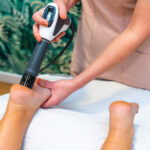There’s Big Money In SCHOOL CHAIR
Market Demand: The demand for school chairs is directly linked to the number of educational institutions and student enrollments. As population growth and educational awareness continue, the market for school chairs is likely to remain steady or experience growth.
Quality and Innovation: Investing in designing and manufacturing high-quality, ergonomic, and durable school chairs can give a competitive edge. Schools and educational institutions prioritize chairs that offer comfort, support good posture, and enhance the learning experience.
Safety and Regulations: School furniture must adhere to safety regulations and standards. Ensuring compliance with these requirements helps build trust with customers and may give your business a competitive advantage.
Pricing and Cost Management: Determining competitive pricing while maintaining profitability is essential. Managing production costs, raw material expenses, labor costs, and other overheads will directly impact your profit margins.
Market Competition: The school furniture industry is competitive, with various manufacturers and suppliers vying for contracts. Conducting market research to understand your competitors and identify unique selling points can help you position your products effectively.
How To Quit SCHOOL CHAIR
Speak with a teacher or school counselor: Explain your concerns and discomfort regarding the school chair. They may be able to offer alternative seating options or accommodations to improve your learning environment.
Request ergonomic adjustments: Many schools are open to accommodating students’ ergonomic needs. Ask if it’s possible to modify your chair, such as adjusting the height, adding a cushion, or using a different type of chair that suits your preferences.
Consider alternative seating options: Some schools provide flexible seating arrangements, such as stability balls, standing desks, or kneeling chairs. Discuss these alternatives with your teacher or school administration to see if they are available options for you.
Explore assistive technology: If you have a specific physical condition that makes sitting for long periods challenging, you may want to investigate assistive technology that allows you to engage with your studies more comfortably. For example, you could inquire about using a laptop or tablet to work in different positions or invest in ergonomic accessories like a lap desk.
Ways To Keep Your SCHOOL CHAIR Growing
Avoid excessive weight: Chairs have weight limits, so avoid placing excessive weight on them. Discourage students from piling heavy objects or sitting on top of the chair. This will prevent strain on the chair’s structure and help it last longer.
Inspect for damage: Regularly inspect your school chairs for any signs of damage. Check for loose screws, cracked or broken parts, or wobbly legs. Promptly address any issues by repairing or replacing damaged chairs to prevent further deterioration.
Protective covers: Consider using removable protective covers for your school chairs. These covers can help protect the chair’s upholstery from spills, stains, and general wear and tear. They can also be easily removed and washed, keeping the chair clean and prolonging its lifespan.
Educate students: Teach students about proper chair usage and the importance of taking care of school property. Encourage them to respect the chairs and treat them responsibly. This will create a culture of care and help preserve the chairs for future students.

















